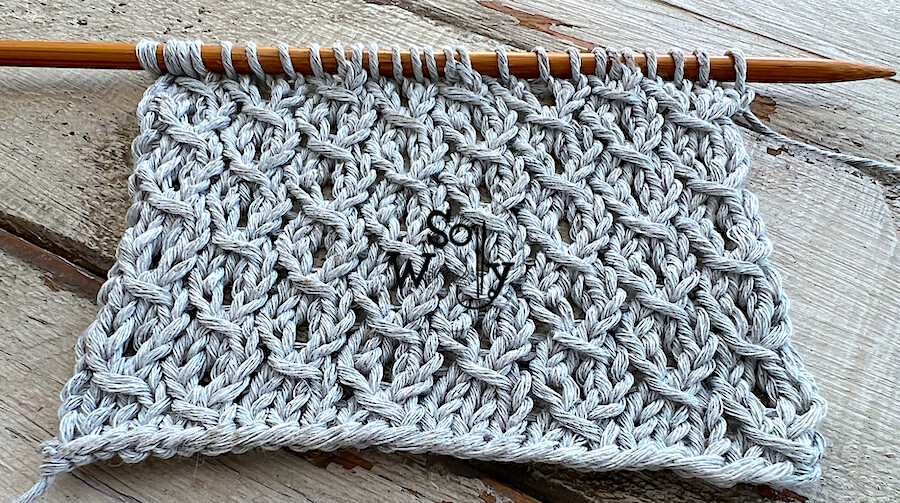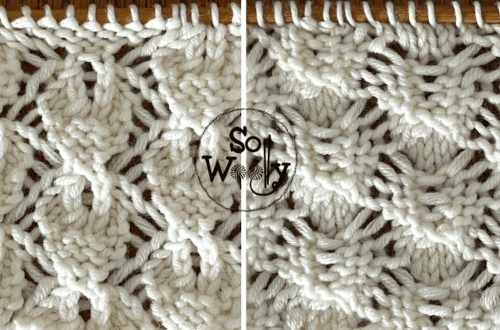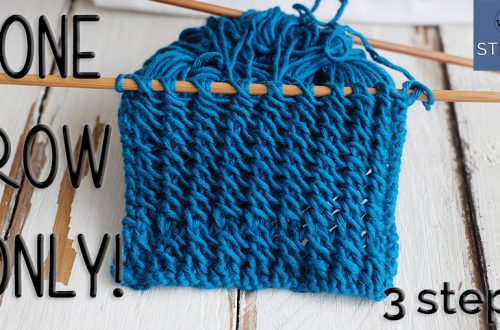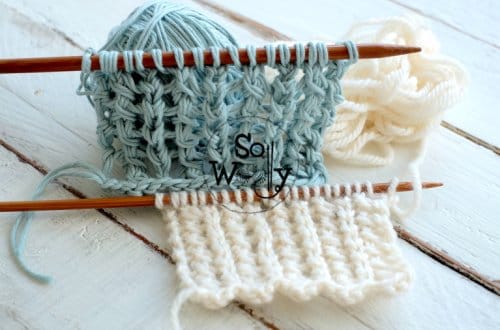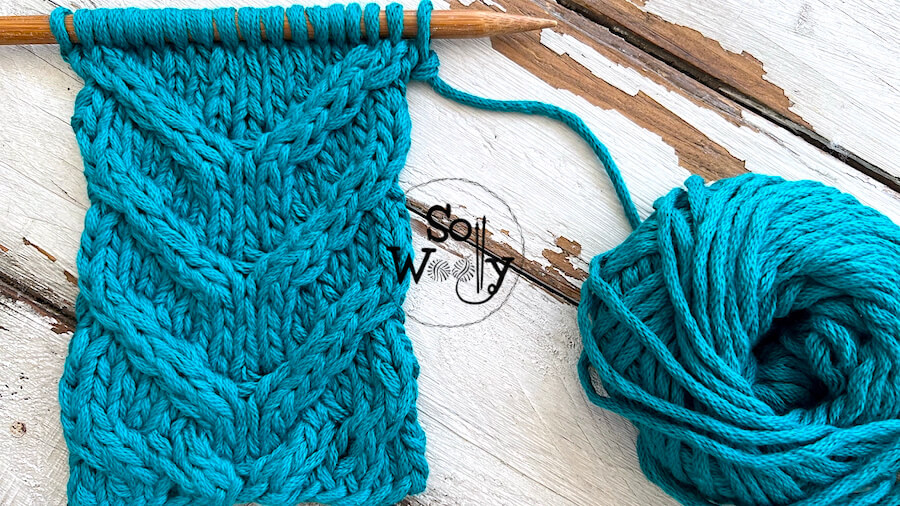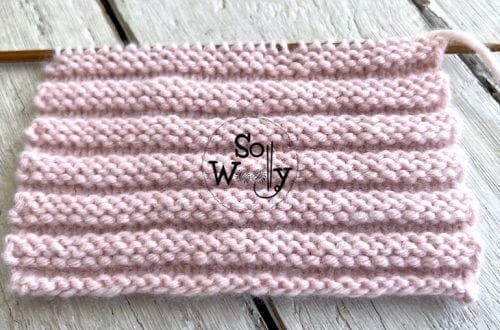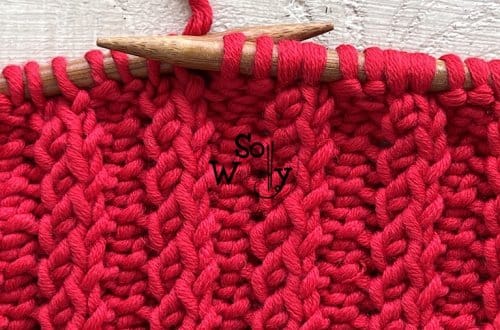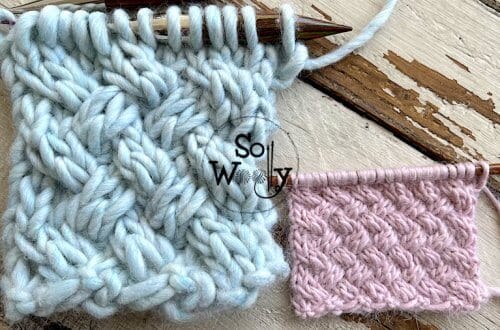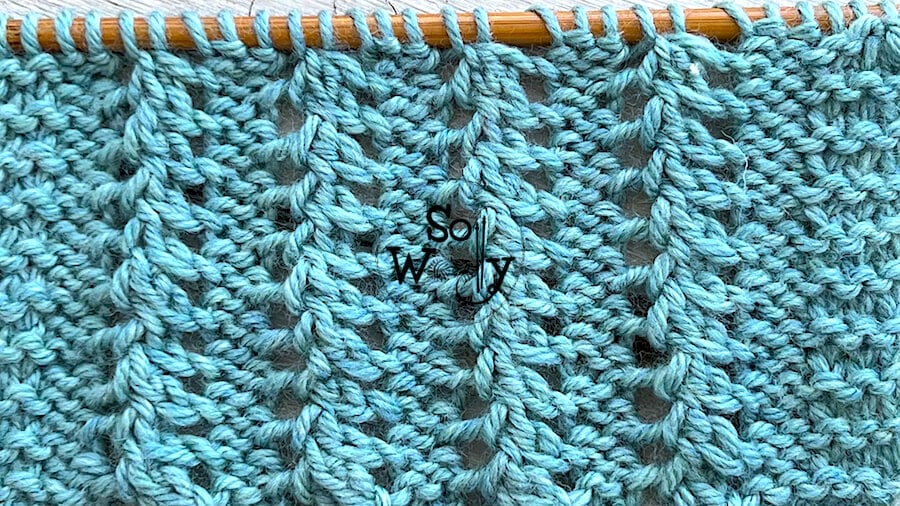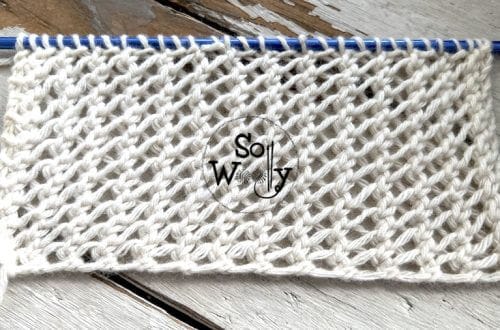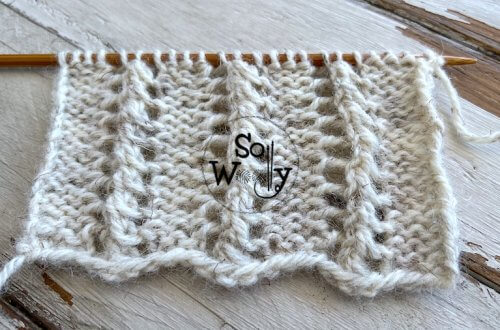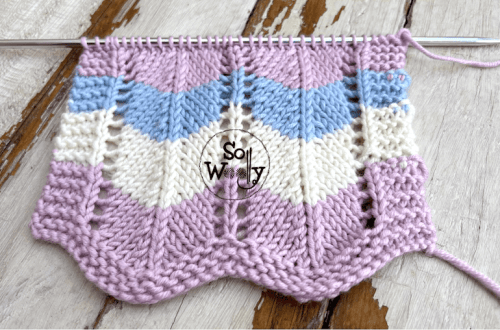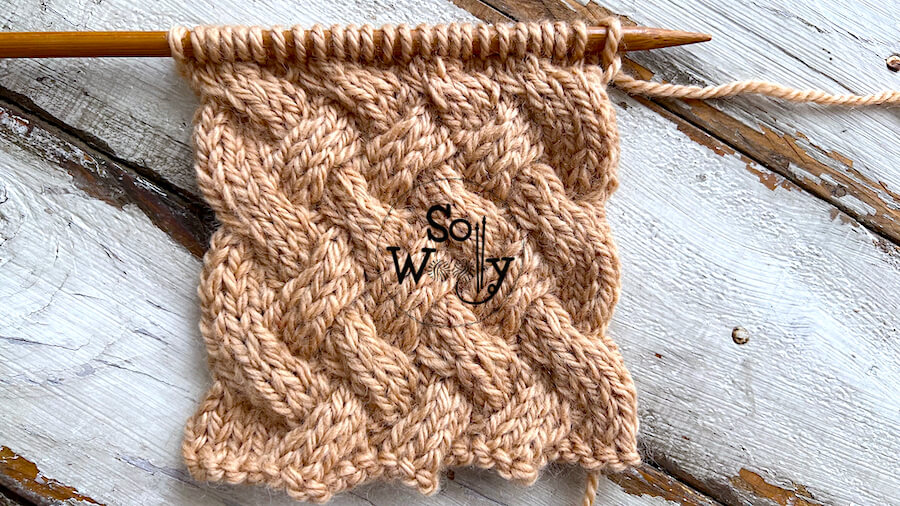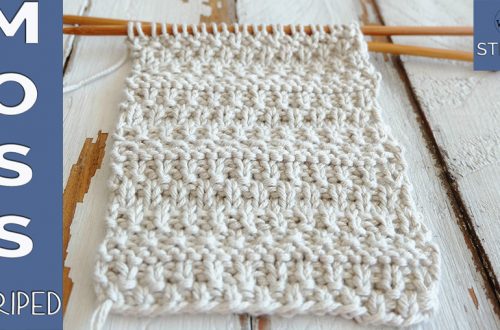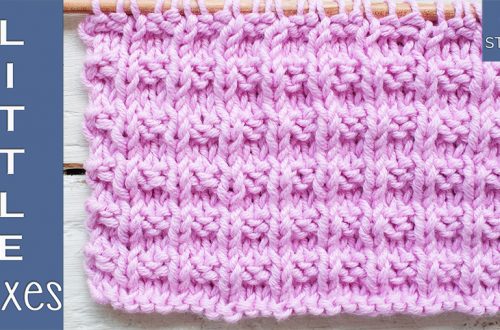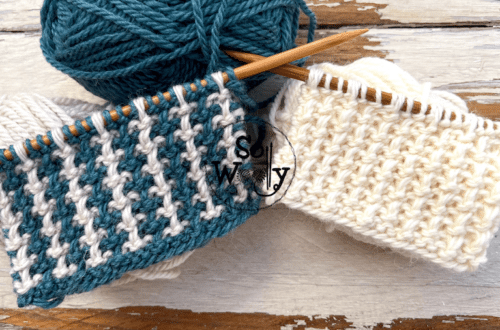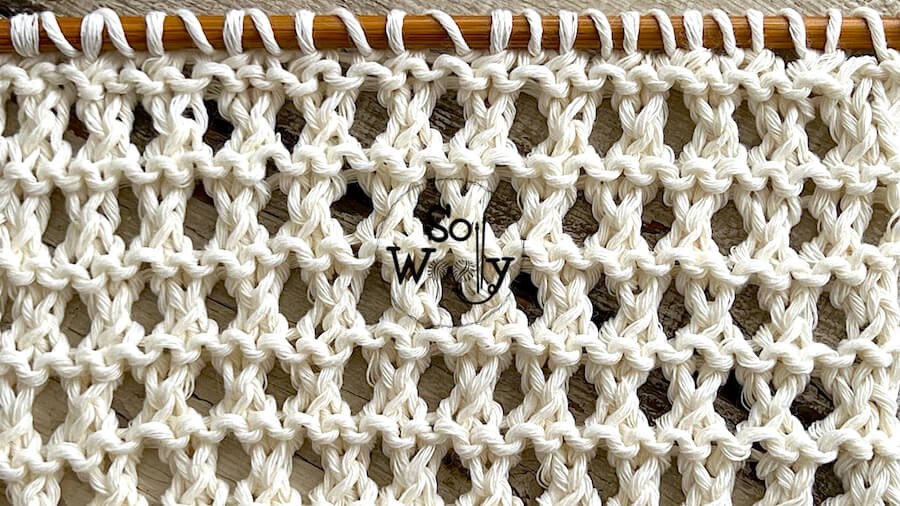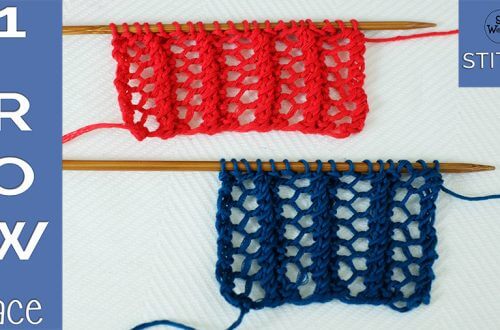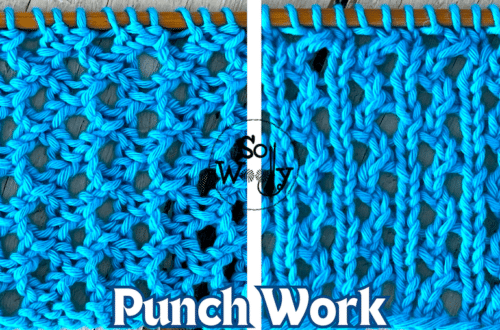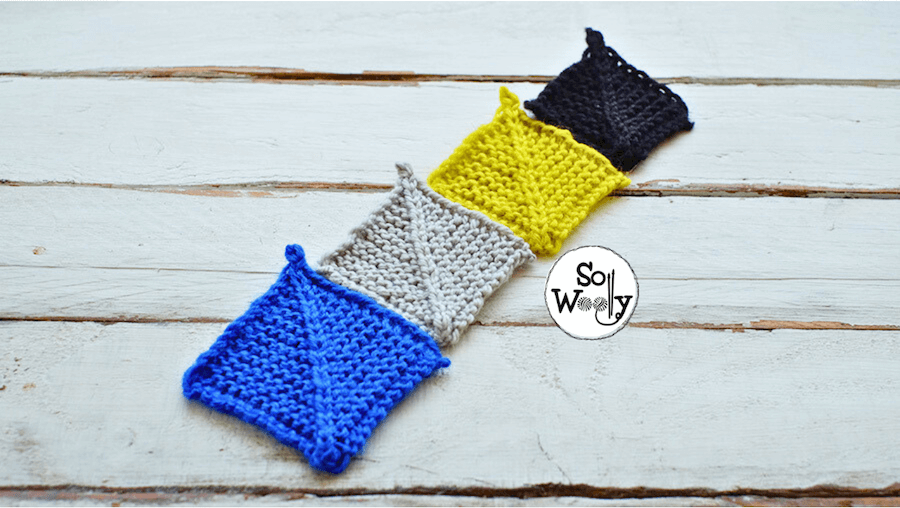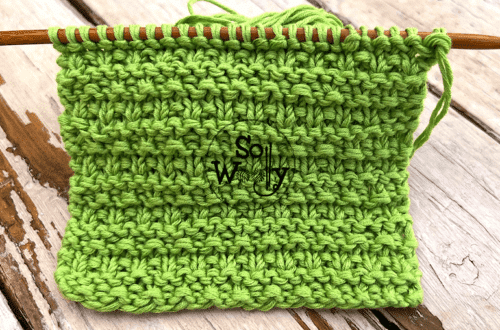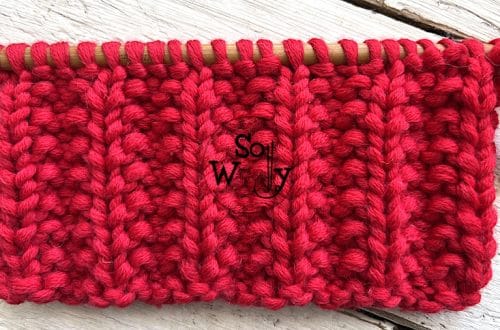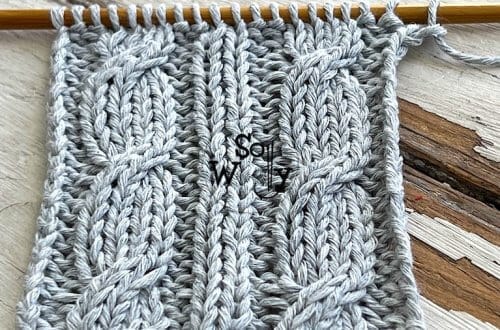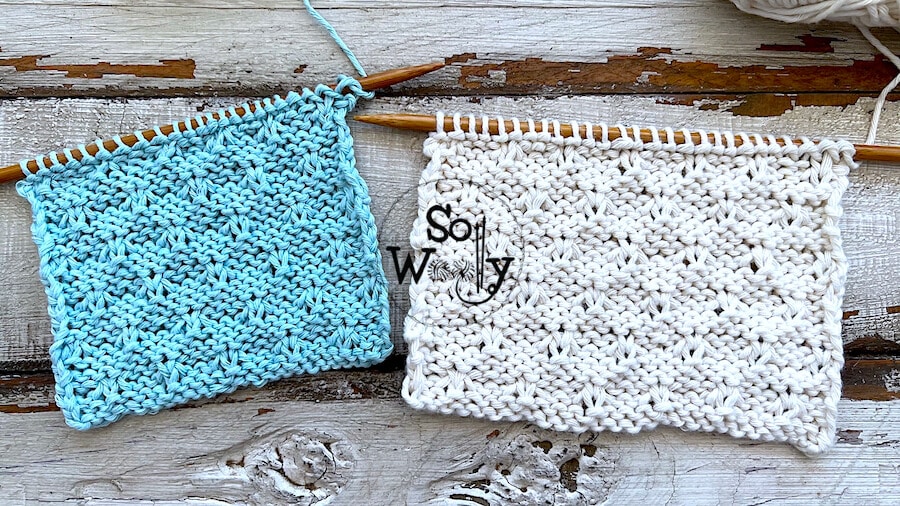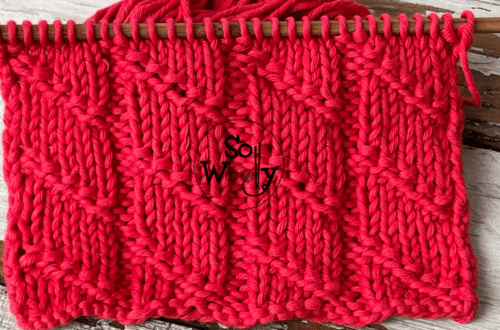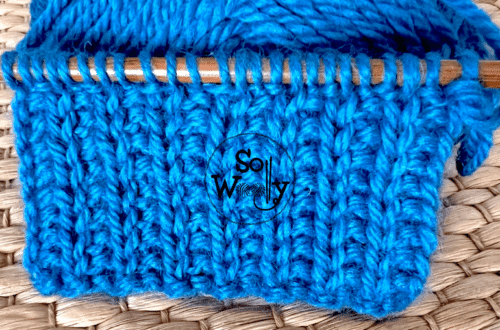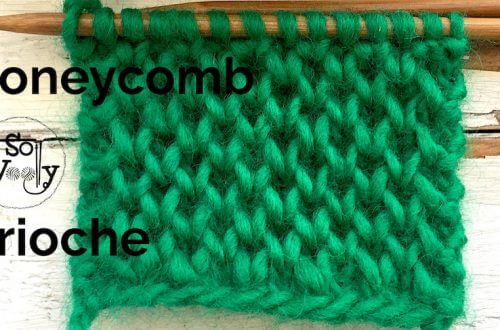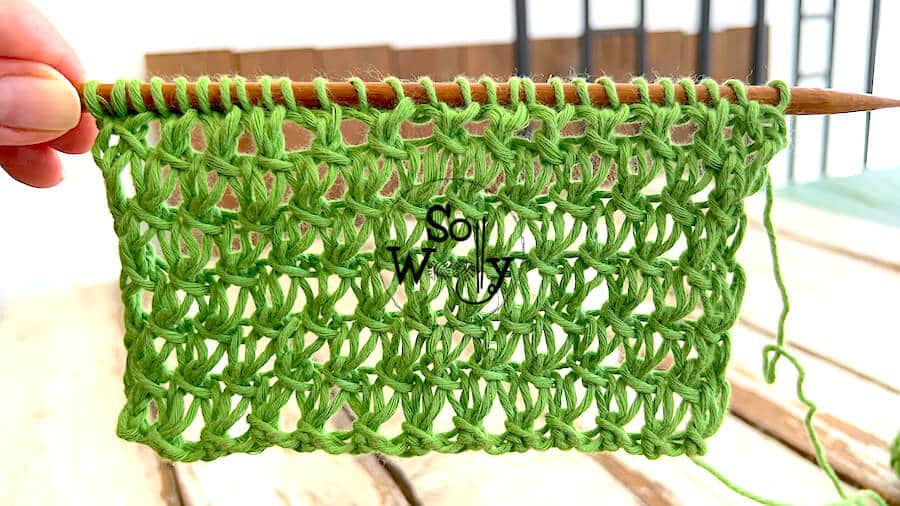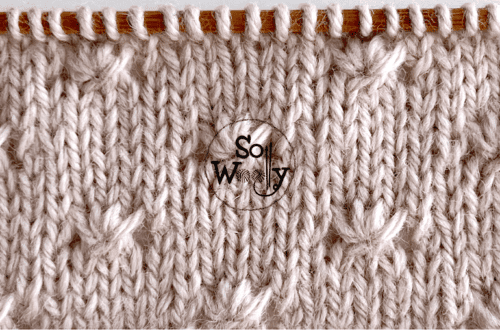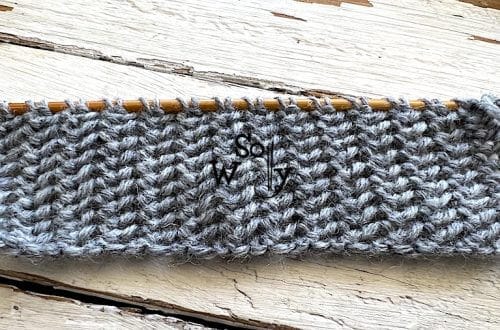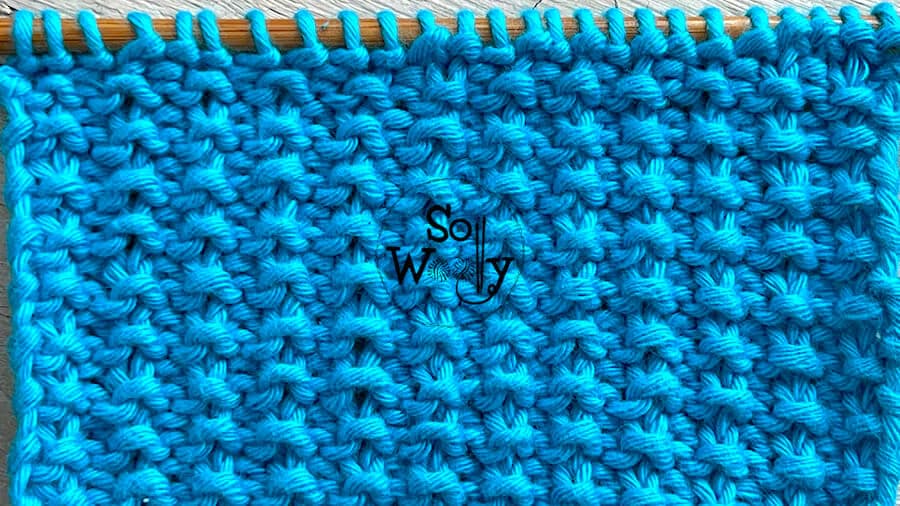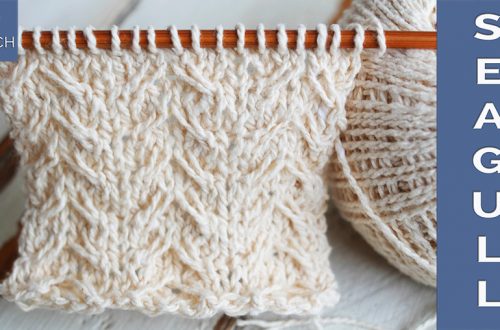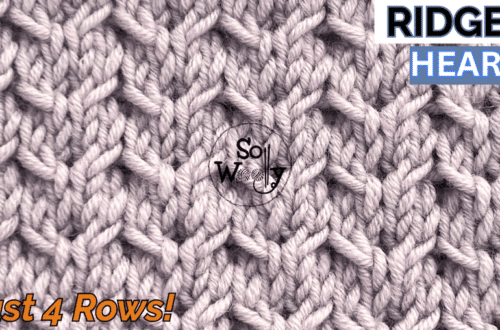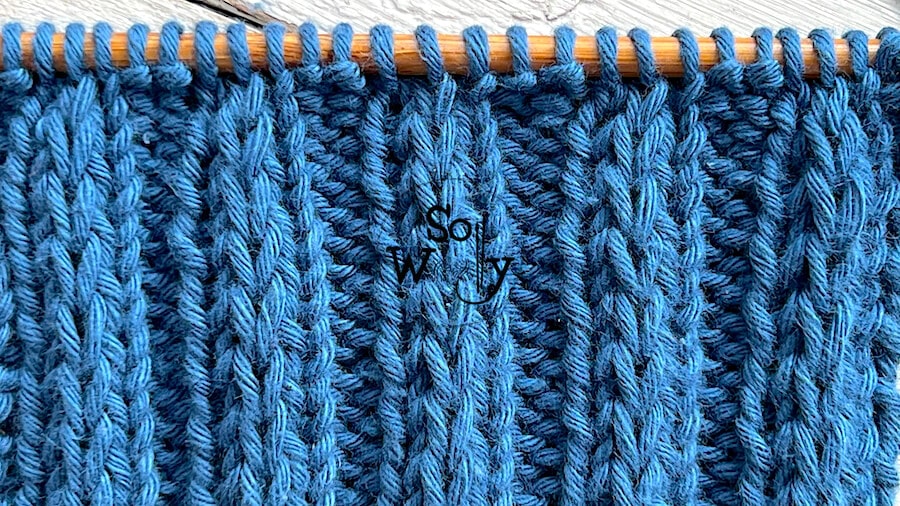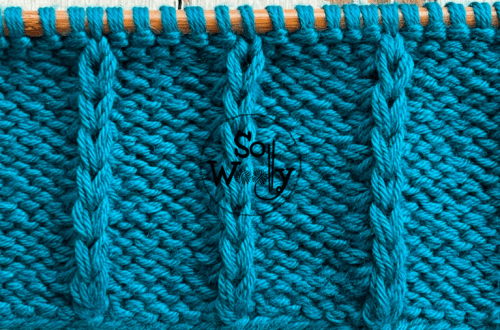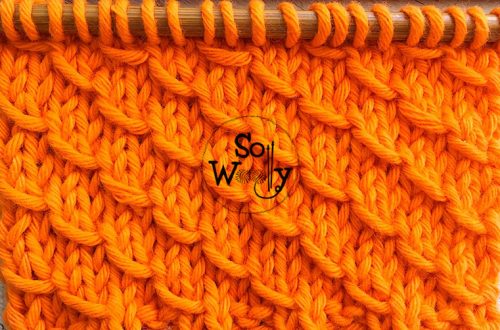-
How to knit the Chestnut stitch (4 rows only!)
In this post, I’m sharing how to knit the Chestnut stitch, similar to the Hazelnut stitch which we practiced a while ago. Although it doesn’t create too much volume, it has a pretty texture to it, featuring little eyelets. It’s a four-row repeat pattern, easy to do, and fun to knit. In fact, the only techniques required are knit, purl, yarn over, slip one stitch, and pass the stitch over. The Chestnut stitch pattern is a great option for a wide range of projects: From shawls and throws, to cardigans or sweaters. Nevertheless, if your choice is to knit a scarf, a wrap, or any other garment that should stay…
-
How to knit the Stag Horn Cable stitch pattern
Today, I’m sharing how to knit the Stag Horn Cable stitch, another classic of the knitting world. It’s a six-row repeat pattern, easy and fun to knit, and great for a central panel of ponchos, sweaters, or even the sleeves of a sweater or cardigan. However, cable patterns are also great for hats, scarves, mittens, and socks, and they look better on a Reverse Stockinette stitch background 🙂 Please take into account that we’ll need a “cable needle”; a third needle of the same size, or a stitch holder, #ad, or hair pin (Bobby pin) in order to cross the stitches. In summary, use whatever is easier for you (I…
-
How to knit the Lace Scarf stitch (2 rows only!)
Today, you’ll learn how to knit the Lace Scarf stitch, an elegant vertical design, full of texture. The good news is that it will also work for accessories, such as infinite cowls, hats, gloves, mittens, etc. Moreover, you can use it for larger garments: Tops, wraps, cardigans, sweaters, and many other projects. It’s a two-row repeat pattern, fun to knit, and easy to do (it doesn’t matter if you’re not an expert knitting lace). Actually, the only techniques required are knit, purl, and the most common increase, and a simple decrease. Although is not identical on both sides, they look pretty, so I’d say it’s a reversible stitch. Besides, it’s…
-
How to knit the amazing Wicker stitch pattern
Today, I’m sharing how to knit the amazing Wicker stitch… YAY! (I know we knitters love this sort of texture). It’s an eight-row repeat pattern, easier than the Braided Basket stitch, because “the cables” are made out of six stitches, so the crossing is more flexible. The Wicker stitch creates a larger pattern, ideal for bigger pieces, such as blankets, bags, or even a whole sweater. However if you choose to knit any sort of garment that should stay flat, don’t forget to add a nice edge on each side of the piece: The Seed stitch, the Irish Moss, and the last pattern I shared specially for edges or borders,…
-
How to knit a super easy Eyelet stitch (beginner-friendly)
In this tutorial, I’m sharing how to knit a super easy Eyelet stitch. Although it’s an eight-row repeat pattern, I’d say it’s perfect for beginners. Why? Firstly, six of the eight rows are plain knit rows. And the other two include two easy steps: Yarn over, and purl two stitches together. In summary, if you can knit and purl, you can do it. Secondly, it doesn’t curl. However, I’d suggest you knit a swatch first, just to double-check. Remember that not only the pattern is responsible for the curling factor, but your tension and the fiber you’re working with, also have an impact on the final result. If your swatch…
-
How to knit Mitered Squares for beginners
Today, I’m sharing how to knit mitered squares, a great technique for blankets, cushions, table runners, placemats, rugs, and many other square or rectangular projects. The good news is that squares are easy and fun to do, this is why they’re ideal for beginners 🙂 Actually, they work best in Garter stitch, using a double decrease through the center, to create a pleasing 3D texture. Moreover, they are pretty flexible: Any yarn, any needles, any colors (or combination of colors) in any size, for Summer or Winter… you decide! Besides that, you can cast on the number of stitches you want, and just knit across the rows, except for the…
-
How to knit the Petal stitch, pretty and easy!
Today, I’m sharing how to knit the Petal stitch, an adorable pattern, ideal for beginners. It has a pretty texture to it, and although it’s an eight-row repeat pattern, it’s super easy to do. In fact, six of those eight rows, are plain knit or purl rows; the little petals are created by knitting one stitch into the row below. I think it’s a nice option when we knitters want to finish a project quickly, but not again using the Stockinette or Garter stitch. The Petal stitch is perfect for sweaters, cardigans, tops, and even hats and socks. Nevertheless, if you want to knit a scarf, a cowl, or any…
-
How to knit a Lace Background stitch pattern (4 rows only!)
Today, I’m sharing how to knit and bind off a Lace Background stitch, perfect for S/S scarves, wraps or throws. Although it may seem complex, it’s not; it includes a short repeat (just four steps to be done time and time again). This Lace Background stitch is a four-row repeat pattern, and the techniques required are well known to all knitters. In addition, it’s a pretty versatile pattern: You can create a sturdy fabric, rich in texture, by using a smaller needle size than the ones normally proposed by the manufacturer. However, if you use two or more needle sizes up, as I did for my swatch, the result will…
-
How to knit the Garter Rib stitch, great for beginners (two rows only!)
Today, I’m sharing how to knit the Garter Rib stitch, which shares the DNA of the infamous Mock Rib stitch. It’s a super easy two-row repeat pattern, great for beginners. In fact, if the only stitches you know (or like, or love) are knit and purl, this one is dedicated to you. Although it’s not identical on both sides, they look pretty, so to me, it’s a reversible pattern. Furthermore, it lays flat no matter what, so it’s perfect for blankets, scarves, etc. Nevertheless, you can also use the Garter Rib stitch for edges or borders, because it meets all the requirements, as mentioned above. Last, but not least, don’t…
-
How to knit a very special Rib stitch pattern (two rows only)
In this post, I’m sharing how to knit a very special Rib stitch, ideal for beginners. Actually, it’s a two-row repeat pattern, easy to do and easy to memorize, and pretty stretchy. Although both sides are not identical, I’d say it’s a reversible stitch, because both sides look pretty. In addition, the only techniques required are knit stitch and purl stitch… And from time to time, we’ll slip one stitch, which helps us create those gorgeous embossed columns of “v’s”. That’s the touch of elegance that makes this Ribbing so unusual 🙂 Finally, this is a great pattern for hems, cuffs, socks, gloves, hats, etc. Enough chatting! Grab your needles,…
